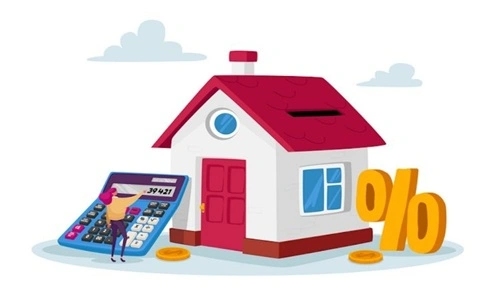Ever wondered why RBI’s policy impacts your loan rates? It’s because RBI is the “banker’s bank.” Commercial banks or even housing finance institutions like PNB Housing Finance borrow funds from the RBI for a short term, and they also charge an interest, which is fixed according to the repo rate fixed by the RBI. This rate is actually the cost of money for these financial institutions.
When the RBI decides to change the Repo Rate, which it does to control inflation and economic growth, it will directly affect how expensive it is for financial institutions to do business, and that is why it affects the loan rates, including the home loan interest rate in India.

Repo Rate and Home Loan Interest Rates
When the RBI increases the Repo Rate: It’s its way of decreasing the level of money circulating in the market, mostly to control inflation. Banks find borrowing more costly. Naturally, they pass this increased cost on to you, the consumer, by increasing their own lending rates. That means your floating home loan interest rate in India increases, resulting in your Equated Monthly Installment (EMI) to be larger.
When the RBI reduces the Repo Rate: It’s normally attempting to spur economic growth. Banks pay a lower cost to borrow. They are then incentivised to reduce their lending rates, and this advantage is normally passed on to you. Your floating home loan interest rate in India falls, bringing down your EMI.
Floating Rates: The Direct Connection
For most new borrowers in India, the connection is immediate because of the shift to Repo Linked Lending Rates (RLLR) or similar External Benchmark Lending Rates (EBLR).
Previously, loan rates were linked to internal benchmarks like the Marginal Cost of Funds-based Lending Rate (MCLR), which didn’t always transmit the RBI’s policy changes quickly or fully. The majority of floating rate home loans nowadays are actually linked directly to the Repo Rate, with an additional margin charged by the lender. Therefore,
Your Loan Rate = RBI Repo Rate + Lender’s Margin
This direct correlation guarantees that whenever the RBI changes its policy, your loan interest rate will change within a short, specific time frame. If you have a floating rate home loan, you will notice a shift in your EMI or your loan period shortly after the RBI announces. For example, an increase in the interest rate on the home loan in India can push your tenure by a few months or even years, depending on whether your bank decides to maintain the EMI amount fixed. Or, if the tenure is fixed, your monthly payment will go up.
How to Handle Rate Changes
The Indian home loan interest rate market can be volatile, and that is why you must learn to deal with the fluctuations:
- Track RBI Meetings: RBI Monetary Policy Committee (MPC) meets every two months to discuss the rates. Keeping an eye on these releases enables you to gauge whether your EMI can be changed.
- Floating vs. Fixed: If you are stable-minded and don’t wish to be surprised by increasing EMIs, a fixed-rate home loan may be more suitable, though its initial rate would typically be higher than a floating-rate loan.
- Part-Prepayments: Prepaying in small, periodic instalments in a rising-rate environment can cut down substantially on principal and save you a sizable amount of interest over the term of the loan, countering the impact of increased rates.
In short, the RBI’s decisions are a primary force of the country’s credit market, and it directly affect the monthly budget of every floating-rate home loan borrower. Understanding this relationship is the first step toward smart home loan management. Plan for these ups and downs and choose trusted financial institutions to make your repayment stress-free.

Hello, I’m Kapil Kumar, a seasoned SEO expert and blogger at WinnersList.in. My mission is to spotlight exceptional individuals and organizations across various domains. Through curated lists, profiles, and inspiring stories, I aim to celebrate outstanding achievements and inspire the next generation of champions. Join me in this journey.
